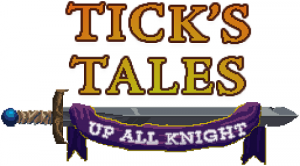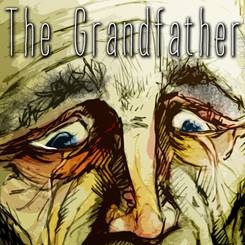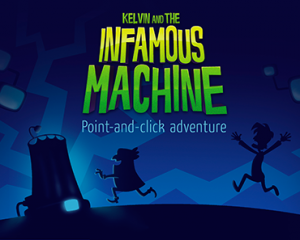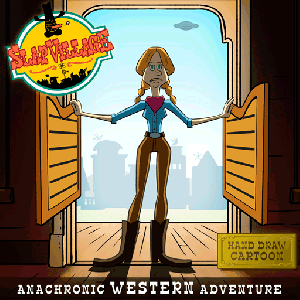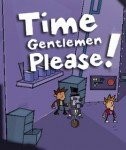Review for Obduction
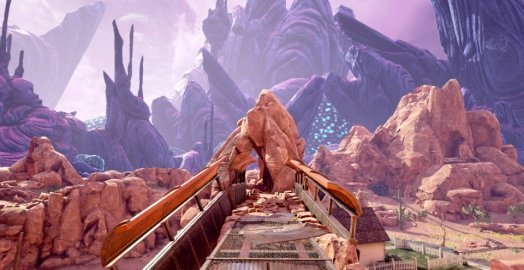
Obduction is the latest puzzle-laden, first-person 3D adventure game to be released by Cyan, makers of the iconic Myst series. I’ve played all the Myst games (even the triple-iteration of Myst, realMyst, and realMyst Masterpiece Edition). Plus I have frittered away goodly chunks of my time enjoying Myst Online: Uru Live. So I admit to being slightly disappointed when I first learned that Cyan was Kickstarting a “spiritual successor” to its seminal adventure, not a physical successor. But any lingering disappointment lasted about five minutes into the beginning of Obduction, when my longing for another Myst dissolved into a sneaking sense of admiration for the surreal graphics and a raging curiosity as to what was going to happen next.
In fact, I’m now firmly convinced that Cyan was spot-on in conceiving a new mythos, new characters, and a new explanation for how you have been catapulted into the role of discoverer, problem-solver and savior of alien worlds. As the game begins, you are enjoying an evening in a forest on Earth when you see an unusual lightshow in the sky. As you move closer, a glowing, seed-like object appears and you are caught up in a swarm of light. You are then plopped down... somewhere else, in the middle of a town called Hunrath with crazy railway tracks, purple rock formations, and squishy, pock-marked spheres.
Soon you stumble across holograms of Hunrath’s mayor describing how previous abductees have banded together to create a new culture in this bizarre landscape. But the town seems deserted – homes and workplaces are empty. A door with a welcome mat is ironically boarded up, and the community garden is dry as dust. The only human you encounter is a cranky mechanic named Cecil, who’s locked behind a glass door. He tells you he’s the sole survivor of a recent war and the only way to return home is for you to reactivate a super-powered organic structure that was recently decommissioned.
At first I thought the title Obduction was an artistic-licensed way of spelling “abduction”, since its inhabitants have been snatched one-by-one via alien seeds like the one that kidnapped you. But it turns out that “obduction” describes the “…upwards movement of…a crustal plate over the margin of an adjacent plate.” This also fits the situation in the game, as fragments of other planets have been mysteriously transported and layered together in, under, and around Hunrath.
You’ll find books and papers left behind that provide some explanation as to what is going on, including details about the exotic lifeforms that your fellow humans have encountered here. Cecil also gives brief details, though he complains more than he explains. As my knowledge increased, and the sense of tackling a mystery kept building, I also began to admire the resourceful ways the abductees responded to their situation.
Human characters are presented in full-motion video, sometimes as holograms or on video screens. You’ll also find bits and pieces of what once were aliens: an arm here, shreds of scaly skin there. The mayor has a pleasant accent and a political way about him. (Apparently politics are the same no matter where you end up in the universe.) Cecil’s southern accent is reasonably believable, as is his crusty manner which is burnished by an eccentric choice of words. “Karffin.” That’s a word that should come in handy someday.
The realistically rendered environments in Obduction are as vast as those of any Myst game, but you won’t find any stained glass, elaborate carvings, or characters in fancy robes. Instead you’ll find some interiors that feel more like a community center just after a Scout troop meeting. These American frontier-like rooms contrast with the sleek, futuristic alien pods and chambers. Giant machines provide the structure for one area, with huge metal chains evoking a crushing brutality. Elsewhere, magnificent rock formations and untamed foliage combine in wild, spontaneous landscapes.
I experienced a few double-takes. The purple banners are actually something else entirely, for instance. And remember the rollercoaster rides in Riven? There are tram-like vehicles here as well. Ambient sound and animations bring the environments to life: the howl of a blustery wind with mist swirling, the ripple and roar of water in a stream, a flock of flamingo-like birds flapping across the sky with endearing awkwardness. Footsteps sound with a crunch or clank or clomp depending on the surface you’re crossing. I was amazed at the depth, detail, and extent of three of the regions. They’re an explorer’s dream come true, and I spent many hours drifting along the paths, gawking at it all.
A diverse soundtrack accentuates the atmosphere. Sometimes I could hear eerie techno music with unnerving electronic pulses or bombastic rhythms with almost a touch of rock ‘n’ roll. A moody piano tune brings a sense of loneliness and longing in a young woman’s private hideout; and delicate, celebratory string music augments the sequence in which organic structures are brought finally and joyfully back to life.
Like the Myst games, Obduction dodges the necessity for an inventory system. Most of the puzzles involve working with machines, figuring out (or bumbling through) an alien numbering system, or finding your way through large, complex environments using portals and transporters. Power must be restored, doors opened, buttons pushed, obscure codes finagled, and time spent puttering about on a rail car.
Finding the connections that work to make all this happen is an adventure in itself, as there are power and rail lines crisscrossing everywhere, tunnels underneath, and craftily blocked upper rooms. Your actions have immediate consequences right where you are. But often they also spark outcomes in another area, and you have to go there to figure out what (or, even better, why). Keeping track of where everything is and what it leads to is absolutely essential. You’ll discover a couple of maps of Hunrath, but they are primitive and not particularly helpful. A quick travel map would have reduced some of the traipsing, but with so many portals and transporters gradually becoming available, it might actually have made overall travel even more complicated.
As you puzzle your way along and understand how everything is linked, getting from one place to another becomes somewhat easier. Still, the fragmented nature of these worlds inevitably becomes confusing and starts to feel a bit overdone. There are logical plot reasons for the fracturing of the paths you must take and the trouble you have to go through to fix things. But in the end you begin to question whether the elaborate precautions taken by the citizens of Hunrath weren't more trouble than they were worth.
The complexity of the puzzles and the back-and-forthing cause the story to lag at times. By far the worst slow-your-progress sequence is the labyrinth, which occurs late in the game (taking my time to be thorough, I was about 40 hours in at that point). The labyrinth is one of the most confusing puzzles I’ve ever encountered. Partly that’s because it’s made up of multiple rotatable parts and you can’t see the whole thing at the same time (you’re up on a balcony that somewhat obscures the overhead view). You can’t even see the entrance until you go down an elevator to try to enter the maze.
Although rotating the overall labyrinth is simple, rotating and otherwise adjusting the various parts so they sync together is a nightmare, involving (for the straightforward bits) going down an elevator, through a portal device, up and down a flight of stairs, back through the portal device, and back up the elevator before you can observe the changes. Plus there’s another twist thrown in requiring even more navigating around the environment under specific circumstances. I spent five hours in the labyrinth, and I thought I’d brought it into every possible configuration (none of which worked) before referring to a walkthrough. Even after absorbing the walkthrough, it took me another hour to get it right.
Labyrinths should be permanently banned from adventure games. (I know, once I calm down I’ll feel differently and welcome the next labyrinth with open arms. And a bulldozer.)
Obduction requires a high-end gaming system if you want to admire all its visual realisms and ingenuities. It also contains a panoply of interface, sound and graphics options. Basically everything you can think of tweaking can be tweaked. I played the game on two computers – my laptop, which met the minimum system requirements, and my desktop computer, which didn’t quite meet them. I was able to play the game relatively smoothly on my older computer by changing the resolution and putting the settings on “low,” which meant that the graphics weren’t as sharp and the water, light, and shadow effects were reduced. But the environments still were lovely to explore, if not quite as impressive.
On both computers (though less so on my newer laptop) I encountered long loading screens when starting the game or teleporting into the hub-world of Hunrath. A first patch intended to eliminate the problem didn’t have much of an effect. As of this writing, another update has just been released, so it’s clear that Cyan is continuing to upgrade the game’s performance, but it certainly wasn’t released in the most polished state.
You can wander the worlds in free roam mode, where you use the mouse to pan and the arrow or WASD keys to move (while pressing “shift” to run or “caps lock” to always run). Or you can enable the point-and-click option with 360 degree panning. I preferred free roaming, but found that the point-and-click option made it easier to locate the occasional hard-to-find door or trail, so I used it when I was stuck. It also came in handy a few times when I literally got stuck in the scenery and couldn’t move – switching to point-and-click meant I could simply click my way to freedom. When interacting with the gameworld, you click and drag the mouse, pulling levers or connecting blobs or aiming a laser-like gadget. Autosaves occur frequently, but there’s also an odd and possibly buggy manual save system that is so unintuitive that you probably wouldn’t find it unless you read through the manual.
This game contains two endings. Well, three if you count the single, abrupt “oops” scenario. There’s an ending that brings all your efforts to fruition, and one that doesn’t. Once you’ve seen one endgame cutscene, you can reload and change a factor in the gameworld and then watch the alternate cinematic unfold. I was satisfied by how the plot threads were tied up together, though I’m still working out the reasoning in my mind for one of the outcomes. (I enjoy this touch of ambiguity and invitation to contemplation.)
Obduction isn’t meant to be a quick, easy ride. Its splendid locales and cunning conundrums far outweigh the effect of its slow loading screens and the tedious labyrinth. For the vast majority of the many hours I played and pondered, I was blissfully swept away by this ambitious, unusual game. When I did finally make all the connections, it was amazing to observe the spectacular, pulsing, glowing result. For all who dare to confront its multilayered challenges and enticing pathways, Obduction is an experience that shouldn’t be missed.
WHERE CAN I DOWNLOAD Obduction
Obduction is available at:
We get a small commission from any game you buy through these links (except Steam).Our Verdict:
Obduction is clearly not aimed at impatient gamers with older hardware. But Myst enthusiasts and exotic-world explorers will find a whole new stupendous universe to fall in love with, and fans of mind-bending challenges will find themselves in paradise… most of the time.



_capsule_fog__medium.png)







